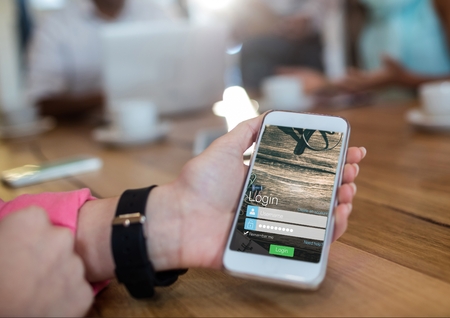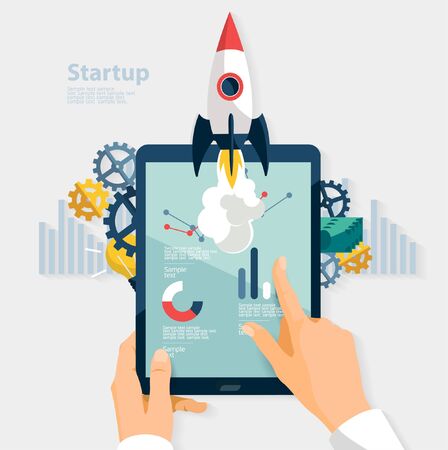1. Introduction to Mobile-Friendly Navigation in India
India’s digital landscape is rapidly evolving, with smartphones becoming a staple in both urban and rural households. From bustling metros like Mumbai and Delhi to remote villages in Odisha and Assam, mobile internet access is bridging the gap across regions. With over 750 million smartphone users, Indians are increasingly relying on their mobile devices for everything—from online shopping to government services and daily communication via WhatsApp or Instagram. In such a diverse environment, ensuring that websites and applications offer seamless, mobile-friendly navigation is not just a bonus—it’s essential. Mobile-friendly navigation means simple menus, easy-to-tap buttons, and fast load times that cater to various languages and literacy levels. For Indian businesses and content creators, delivering smooth navigation on mobile devices helps reach wider audiences, boosts engagement, and fosters trust among users from all walks of life. In this article, we’ll explore top success stories from India that showcase how mobile-first navigation has made a real impact in connecting brands with millions of Indians across the nation.
2. Success Story: Flipkart’s Seamless User Journey
When it comes to mobile-friendly navigation in India, Flipkart stands out as a true pioneer. With millions of shoppers from every corner of Bharat—urban metros to tier-2 and tier-3 cities—Flipkart had to build a navigation system that feels natural and intuitive for everyone. Let’s break down how Flipkart optimized its navigation for Indian users:
Multi-Language Support: Reaching Every Indian
India is a country of many languages. Flipkart recognized this diversity early and made their mobile site available in popular regional languages like Hindi, Tamil, Telugu, Kannada, and Marathi. This inclusive approach helped even first-time internet users shop confidently.
| Feature | Benefit for Indian Users |
|---|---|
| Regional Language Menus | Easier browsing for non-English speakers |
| Localized Search Suggestions | Find products using local terms and spellings |
Fast-Loading Pages: Perfect for India’s Networks
Internet speeds in India can be unpredictable, especially outside big cities. Flipkart focused on lightweight page designs, compressed images, and minimal pop-ups so that pages load quickly—even on 3G or patchy networks.
Key Strategies Used:
- Lazy loading for product images (only loads when scrolled into view)
- Simplified icons and fewer heavy graphics
- Instant preview features so shoppers see details without leaving the main page
Intuitive & Simple Design: No Confusion, Only Shopping!
Flipkart’s design team kept the user interface clean with large tap targets (great for all finger sizes!), clear categories, and logical breadcrumbs. This reduces confusion and makes it easy for everyone—from college students in Pune to grandmothers in Lucknow—to find what they need.
User Experience Wins:
- Bilingual support for banners and offers during festivals like Diwali & Holi
- One-tap access to trending deals (like “Big Billion Days”)
- Persistent bottom navigation bar for quick access to Home, Categories, Cart, and Account
The result? Flipkart’s mobile site feels just right for India’s diverse digital landscape—making shopping accessible, enjoyable, and fast for every Indian shopper.

3. Success Story: Swiggy’s Easy Food Discovery Experience
Swiggy: Simplifying Food Ordering for Every Indian
Swiggy is one of India’s leading food delivery platforms, serving millions of users from big metros to small towns. With a highly mobile-centric user base, Swiggy has invested heavily in making navigation seamless and intuitive for every Indian customer.
Clear Icons for Quick Navigation
The Swiggy app features large, colourful icons that are instantly recognisable—making it easy for everyone, including first-time smartphone users, to find what they need. Categories like “Offers,” “Veg Only,” or “Nearby” are just a tap away, helping users quickly filter their food options based on preference or occasion. The use of visual cues supports fast decision-making, especially during busy meal times.
Regional Language Support: Bharat Ke Liye
India is home to diverse languages and cultures. Swiggy understands this deeply and offers app support in multiple regional languages such as Hindi, Tamil, Telugu, Kannada, Bengali, and more. This localisation ensures that users from any part of India can browse menus, read restaurant reviews, and complete orders comfortably in their mother tongue—bridging the digital gap and enhancing inclusivity across the nation.
Quick Menu Access for Busy Lives
Swiggy’s interface prioritises speed and convenience. Prominent menu buttons—like “Repeat Order” or “Track Your Delivery”—are placed right on the homepage. For those who know what they want, the search function is prominently displayed and optimised for both English and local language queries. By minimising steps from discovery to checkout, Swiggy keeps the ordering journey short and sweet—a must for India’s fast-paced urban lifestyle.
Conclusion: A Model for Mobile-First India
Swiggy’s approach to mobile-friendly navigation combines clear visuals, regional language support, and streamlined menus. This blend not only delights seasoned app users but also brings new digital customers into the fold—from college students in Delhi to families in Coimbatore. Their success story demonstrates how understanding India’s unique needs can drive widespread adoption and customer loyalty.
4. Success Story: Paytm’s Accessibility for All
When it comes to mobile-friendly navigation in India, Paytm stands out as a leading example. Understanding the diverse user base of India, Paytm has designed its app to be truly inclusive and accessible for everyone—from first-time smartphone users in small towns to tech-savvy professionals in metros.
Paytm’s Approach to Inclusive Navigation
One of the key reasons behind Paytm’s success is its strong focus on making navigation simple and intuitive for all users. Here are some strategies Paytm uses:
| Feature | Description | Benefit for Indian Users |
|---|---|---|
| Adaptive Language Interface | Supports multiple Indian languages like Hindi, Tamil, Telugu, Bengali, and more. | Makes digital payments easy for non-English speakers, increasing adoption in rural areas. |
| Simplified Menus | Main services such as “Send Money”, “Mobile Recharge”, and “Book Tickets” are placed at the top with large icons. | Quick access for users with varying literacy levels or limited experience with apps. |
| Easy Service Switching | Allows seamless transition between payments, ticket booking, bill payments, and shopping within one app. | Saves time and reduces confusion by keeping everything under one roof—no need to download multiple apps. |
| Contextual Help & Tutorials | Provides guidance in local languages throughout the user journey. | Empowers new users to perform transactions confidently without outside help. |
User Experience Tailored for India’s Diversity
Paytm ensures that its mobile navigation adapts to local needs:
- Regional Relevance: The app detects user preferences and location to offer region-specific language options and services, such as state electricity boards or local bus bookings.
- Low-Bandwidth Optimization: Pages load quickly even on slower networks common in remote areas of India, ensuring accessibility everywhere from Mumbai to Manipur.
- Cultural Familiarity: Icons and terms used in the app reflect daily life in India (like “DTH Recharge” or “Gold Purchase”), which increases trust and usability among Indian audiences.
The Result: Digital Inclusion at Scale
This focus on inclusive navigation has helped Paytm bring digital financial services closer to millions across India. Whether someone is paying their child’s school fees in Marathi or booking a train ticket in Hindi, Paytm makes it possible without any language or technical barriers. By creating an adaptive and accessible mobile experience, Paytm not only drives business growth but also supports digital empowerment across the country.
5. Key Elements behind Indian Mobile Navigation Success
Minimal Text for Quick Understanding
In India, users access the internet on a wide range of mobile devices and network speeds. Successful navigation design keeps text minimal and to the point. Short, simple phrases in English or regional languages make it easy for everyone, from urban professionals to rural users, to quickly understand their options. This approach respects varying literacy levels and supports users who may be navigating in their second or third language.
Prominent Call-to-Action Buttons
One of the most effective strategies seen in top Indian apps and websites is the use of large, colourful call-to-action (CTA) buttons. Whether it’s “Order Now,” “Pay Bill,” or “Book Cab,” CTAs are visually distinct and often placed at thumb-friendly positions on the screen. These buttons use familiar Indian English phrases or even direct Hindi or Tamil instructions, making them instantly recognizable and actionable for diverse audiences.
Support for Multiple Scripts and Languages
India’s linguistic diversity is vast, with over 20 major languages and hundreds of dialects. Successful mobile navigation offers support for multiple scripts such as Devanagari (Hindi), Tamil, Telugu, Bengali, and more. Users can easily switch between languages, ensuring comfort and confidence while browsing. This inclusivity builds trust and encourages frequent usage across different regions.
Examples from Top Indian Platforms
Apps like Paytm, Swiggy, and IRCTC Rail Connect have set benchmarks by offering navigation in several Indian languages and keeping layouts clean. Their success stories show that when people see content in their mother tongue with easy navigation, they engage more deeply.
Cultural Relevance in Design Choices
The use of icons familiar to Indian audiences (like rupee symbols or local foods) alongside text further enhances understanding. Combining visual cues with regional scripts creates a navigation experience that feels both modern and locally relevant.
By focusing on minimal text, strong CTAs, and multi-language support, India’s leading digital platforms have created mobile navigation systems that truly connect with all segments of the population.
6. Cultural Insights: Meeting Indian Users’ Unique Needs
Understanding Indian users goes beyond translating an app into English or Hindi. It’s about embedding cultural elements and building trust within the navigation experience. Here, we highlight how successful Indian apps use mobile-friendly navigation tailored for local expectations.
Trust Signals: Building Confidence with Every Click
For Indian users, trust is a key decision driver, especially when navigating new platforms. Top apps like Paytm and Flipkart include visible trust signals in their mobile navigation. These include secure payment badges, “Verified Seller” icons, and customer support shortcuts. Such features reassure users, helping them move confidently through the app, from product discovery to final purchase.
Personalized Recommendations: Making Users Feel at Home
Indian mobile users expect personalization that reflects their preferences—language, region, and shopping habits. Leading apps like Amazon India and Zomato leverage AI to provide custom recommendations right in the navigation menus. For example, food apps might highlight “Popular in Delhi” or show personalized banners for cricket lovers during IPL season. This approach boosts engagement by making users feel seen and valued.
Festival-Driven Navigation Adjustments
India’s diverse festivals—Diwali, Holi, Eid, Pongal—are not just cultural highlights; they shape user behavior online. Successful apps transform their mobile navigation during these periods with festival-themed banners, quick links to special offers, and localized greetings. Myntra and BigBasket are prime examples; they adjust home screens and categories to spotlight festival collections or groceries needed for upcoming celebrations. These timely changes make the app feel current and culturally relevant.
By focusing on trust signals, personalization, and festival-driven updates, Indian apps deliver navigation experiences that truly resonate with local users—making every interaction smooth, familiar, and meaningful.
7. Lessons Learned and Best Practices for Future
Summary of Practical Tips from Indian Success Stories
Drawing inspiration from top Indian apps like Zomato, Flipkart, Paytm, and Swiggy, businesses can develop mobile-friendly navigation that truly resonates with the Indian audience. Here are key lessons and actionable best practices:
1. Prioritise Simplicity and Local Relevance
Indian users value straightforward menus and clear icons. Use familiar symbols, regional languages, and avoid clutter to ensure users from all backgrounds can navigate your app easily.
2. Fast Loading & Light Design
With varying internet speeds across India, light-weight navigation bars and minimal graphics help pages load faster even on 3G connections or budget devices.
3. Thumb-Friendly Layouts
Design navigation elements within easy reach for one-handed use. Bottom navigation bars and large tappable icons are proven choices by leading Indian apps.
4. Leverage Personalisation
Personalised shortcuts (like “My Orders” or “Repeat Last Payment”) make navigation quicker for frequent actions, increasing user satisfaction—a strategy seen in Paytm and Swiggy.
5. Multilingual Support
Cater to India’s linguistic diversity by offering major regional languages in navigation labels and onboarding flows. This builds trust and engagement beyond metro cities.
6. Offline Functionality
Integrate offline navigation features or cache essential menus, helping users access key parts of your app without active data—important in many Tier II/III towns.
7. Continuous Feedback Loop
Use simple in-app surveys or feedback buttons so users can report navigation issues instantly, allowing you to iterate rapidly based on real user needs.
Final Thought
The success of India’s top apps proves that understanding local user behaviour and constraints is vital. By combining simplicity, speed, localisation, and ongoing feedback, businesses can craft mobile navigation that truly connects with India’s diverse digital population.


